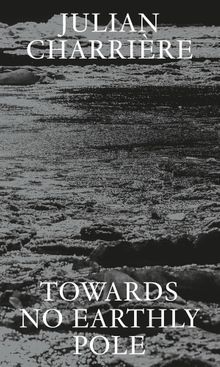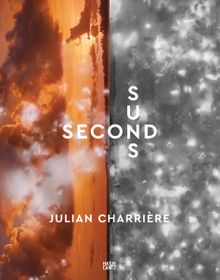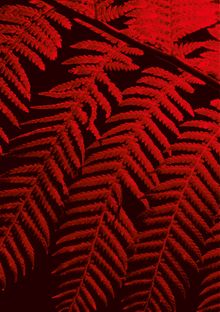ARTIST MONOGRAPHS
|
|
STATUS: Out of stock Temporarily out of stock pending additional inventory. |
 Julian Charrière: Towards No Earthly Pole
Julian Charrière: Towards No Earthly Pole
Published by Mousse Publishing.
Edited with text by Dehlia Hannah. Text by Francesca Benini, Amanda Boetzkes, Anna Katherine Brodbeck, Scott MacKenzie, Anna Westerstahl Stenport, Shane McCorristine, Nadim Samman, Katrin Weilenmann. Conversation with Dehlia Hannah, Konrad Steffen. Afterword by Julian Charrière, Dehlia Hannah.
French-Swiss artist and explorer Julian Charrière (born 1987) has long explored issues related to transformations in nature and the role humans play in such processes. In the cinematic work Towards No Earthly Pole, Charrière combines various ice landscapes into a sensual, poetic universe. The work relates to the current climate crisis through his engagement with the topography of glacial landscapes and the figure of the artist as investigator and explorer. To realize the film, the artist traveled with his team to some of the most inhospitable areas on earth.
In his photographs, videos and objects, Charrière upends the images and concepts we have of these regions, appealing to our capacity to marvel at the world.
PUBLISHER
Mousse Publishing
BOOK FORMAT
Paperback, 6.75 x 11.25 in. / 296 pgs / 109 color / 5 bw.
PUBLISHING STATUS
Pub Date 3/30/2021
Active
DISTRIBUTION
D.A.P. Exclusive
Catalog: SPRING 2021 p. 114
PRODUCT DETAILS
ISBN 9788867494347 TRADE
List Price: $40.00 CAD $56.00
AVAILABILITY
Out of stock
STATUS: Out of stock Temporarily out of stock pending additional inventory. |
 Julian Charrière: Second Suns
Julian Charrière: Second Suns
Published by Hatje Cantz.
Edited by Nadim Samman. Text by David Breskin, Ele Carpenter, Carson Chan, Eric Ellingsen, Peter Galison, Dehlia Hannah, Richard Rhodes, Nadim Samman, Charles Stankievech.
French-Swiss artist Julian Charrière’s (born 1987) work in Second Suns investigates the postnuclear landscapes and architecture of the Bikini Atoll and Semipalatinsk, Kazakhstan—respectively American and Soviet nuclear testing sites. This investigation comprises photographs, sculpture and video works, as well as expedition documentation.
PUBLISHER
Hatje Cantz
BOOK FORMAT
Slip, pbk, 2 vols, 9.5 x 12.75 in. / 288 pgs / 152 color.
PUBLISHING STATUS
Pub Date 2/19/2019
Active
DISTRIBUTION
D.A.P. Exclusive
Catalog: SPRING 2019 p. 190
PRODUCT DETAILS
ISBN 9783775744775 FLAT40
List Price: $75.00 CAD $105.00
AVAILABILITY
In stock
in stock $75.00 Free Shipping UPS GROUND IN THE CONTINENTAL U.S. |


